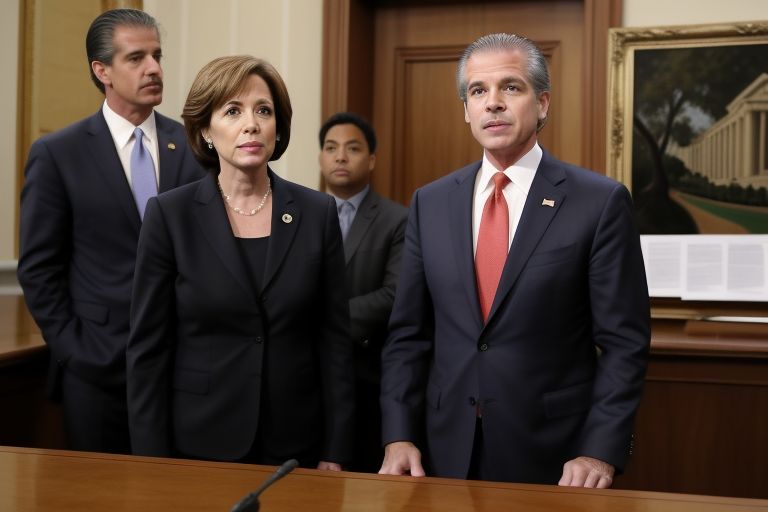Fresno, the fifth largest city in the state of California, is transforming its downtown and unveiling an ambitious plan to revitalise – plans that officials in the city hope will help pull thousands of empty houses and empty retail… A comprehensive redevelopment project, approved by the Fresno City Council, will breathe new life into the city centre developing it into a vibrant mixed use district consisting of both residential, commercial and cultural space.
The initiative, called “Fresno Forward,” represents a sea change in how the city has worked on urban planning and economic development. “It is a game changer,” said Mayor Jerry Dyer, who spoke at a community forum held at historic Warnors Theatre. But Dyer said this is more about than buildings and streets. “It’s a new heart for our city. A new home for people to live and work and to see the richness of the Central Valley.”
The heart of the redevelopment plan is a 20 block area, dubbed the “Fresno Cultural District.” Within this pedestrian friendly zone we will see a mix of affordable housing, boutique shops, restaurants, and open spaces honouring the diverse heritage of Fresno’s communities. A new performing arts centre and expansion of the existing Fresno Art Museum will serve as anchor for the district.
The adaptive reuse of several historic buildings in the downtown area are just part of the most innovative aspects of the project. A 16-storey Art Deco landmark former Bank of Italy building, which has sat vacant for decades, will be converted into a mixed-use development with apartments, co-working spaces and a rooftop restaurant with panoramic views of the city.
There is also a plan to redevelop the area with a big stake in public transportation infrastructure. That new streetcar system will connect the Cultural District to other key areas of the city, including Fresno State University and the Fresno Yosemite International Airport. The move, which is expected to decrease traffic congestion and reduce air pollution, comes in a region that has struggled with pollution over the years.
In an effort to quell fears of gentrification and displacement, the city has partnered with local non-profit organisations to make sure that a significant number of new housing units come at an affordable rate. Rent control and first time home buying assistance programmes that benefit long time Fresno residents are part of the plan.
Redevelopment plan is also celebrating the agricultural heritage of Central Valley. In the heart of the Cultural District, the new farmers market will create a showcase for local produce and artisanal foods and become a new year round farmers market. Furthermore, the new developments will include several rooftop gardens and urban farms in order to promote sustainable agriculture and food security.
The revitalization effort includes local businesses taking roles. A Fresno based technology company Bitwise Industries creates plans to expand into downtown Fresno, building a tech campus to offer local residents job training and entrepreneurship opportunities. Its commitment should also help lure other tech firms to the area while diversifying Fresno’s traditionally agriculture based economy.
The redevelopment vision also is central to the arts community. Public art installations in the Cultural District hang on funds allocated by the city to exhibit local and regional artists. Additionally, a new studio and living stipend artist in residence programme will offer emerging talents whose work enriches the cultural landscape of the city.
Another part of the Fresno Forward initiative is education. The city is teaming up with the State Centre Community College District to build a new campus in downtown focused on digital media and creative arts. With this move, thousands of students will be drawn to the city centre, but they should bring vibrancy and economic activity to the former.
But the redevelopment plan has drawn support across the board, with some community groups have raised questions about how it will be implemented. Fresno Tenants Union is calling for stronger protections against displacement, more extensive community input in the planning process. In response, the city has put Community Advisory Board in place to continue the chatter between developers, city officials and residents as the project is realised.
The Fresno Forward plan is built on the principle of environmental sustainability. There will be stringent green building standards that new buildings in the Cultural District must meet: energy efficient and water conserving. Also, to alleviate the stormwater handling dilemma as well as to counter the urban heat island (UHI) effect, the city is putting up bioswales and permeable pavements.
This ambitious project is funded by a mix of public and private investments to bring this home. In addition to investing more than $1 billion from private developers for new construction and adaptive reuse projects, the city has secured $300 million in state and federal grants for infrastructure improvements. A newly approved sales tax increment will continue to provide ongoing funding for public amenities and the maintenance of the Cultural District.
Across this transformational journey city leaders in Fresno are focused on maintaining the city’s special character while adapting to change. Mayor Dyer said they’re not trying to be San Francisco or Los Angeles. “‘We’re remaking Fresno to be at the heart of the Central Valley,’ we’re saying, ‘we’re making a new, urban model in Fresno that celebrates Fresno’s identity.'”
Fresno Forward already has things buzzing outside the city’s borders. Fresno’s approach is being watched by urban planners and policymakers all over the country to see if it can be a template for revitalising a mid sized city similar to the one she faced.
It’s an era stuck just beyond the horizon, ready to take wing with construction expected to start early 2025. As the Cultural District unfolds over the next years, we expect it to refashion the city and provide new possibilities for its people and visitors alike. If successful, this bold experiment in urban renewal could be very important to cities throughout California and the country.











Leave a Reply